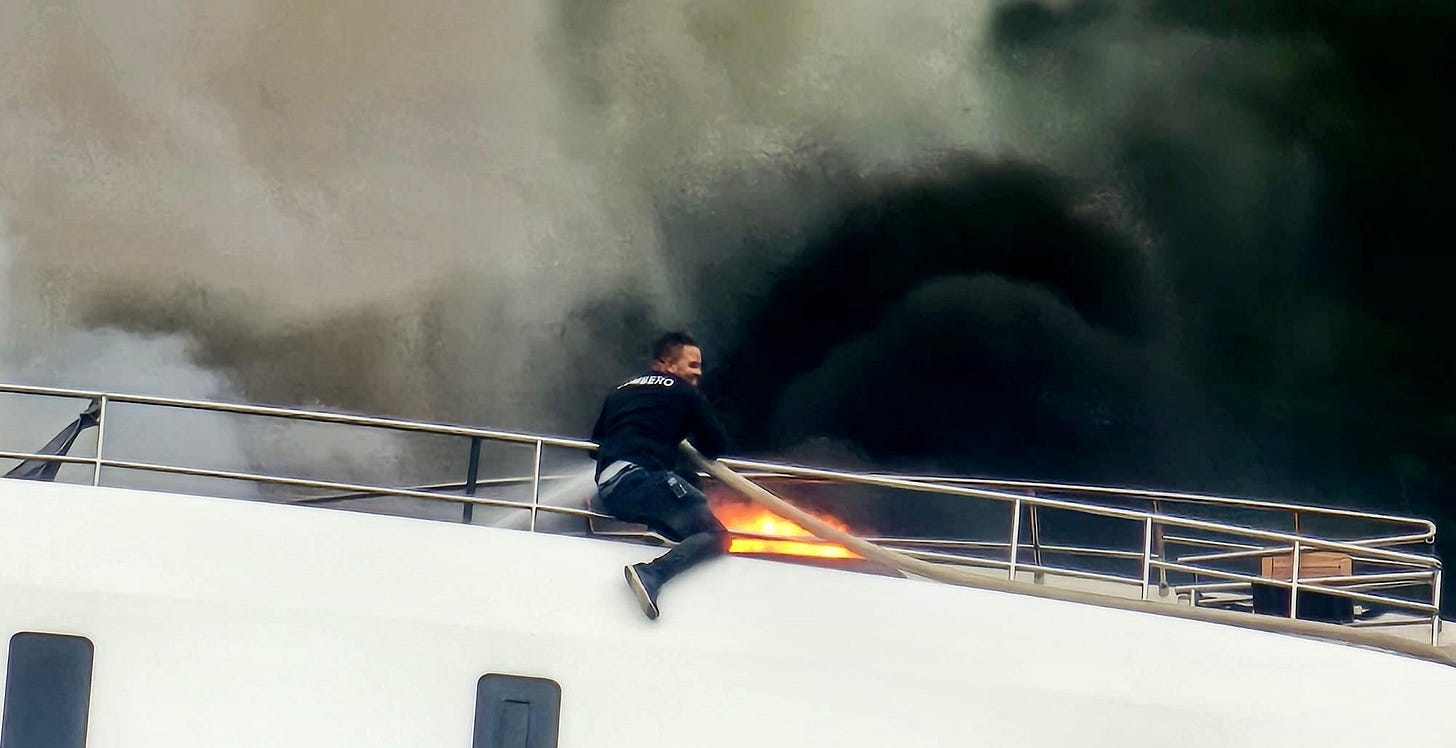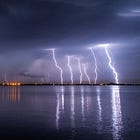Hit by Lightning, $3 Million-Plus Catamaran Destroyed (Videos Tell the Story)
'Capi IV' Belonged to Dominican Industrialist
People in and around the Luperon anchorage heard the explosive crack around 2:36 a.m. By dawn, Fernando Capellan’s 2022 Sunreef 70 catamaran was a smoldering wreck. The videos below tell the story really well.
Capi IV, a $3 million-plus vessel in a harbor full of more modest cruising sailboats, had a few things going against her in the roulette game of lightning in the tropics. At 103 feet, her mast was the tallest in the harbor; that mast was made of carbon fiber and catamarans tend to get struck more often than monohulls to begin with.
Capellan can’t remember the brand of lightning protection installed by the manufacturer—some of them are selling snakeoil—but it probably doesn’t matter. Carbon fiber is problematic because it is both a conductor of electricy and has a tendency to cook when subjected to a 50,000-amp spark of lightning.
Ewen Thomson of Marine Lightning Protection in Gainesville, Florida, is one of the foremost experts on lighting protection for boats.
The way lightning works, Thomson said, is that a negatively charged “stepped leader” begins to make it’s way generally downward from the clouds toward the earth. A bunch of smaller positively charged upward streamers then appear as smaller sparks seeking to connect with the stepped leader and complete the circuit. These spark groups can rise from the earth, buildings, the surface of the water or even people.
Or from the mast of a sailboat, which, if it is the tallest nearby structure, is more likely to connect with the stepped leader than the upward streamers coming off the water, Thomson said.

The most effective lightning protection is a lightning rod at the top of the mast, connected by cable to metal structures on the boat itself, and ultimately led to ground by electrodes arranged at or just above the waterline (new best practice), or to a grounding plate below the waterline (former best practice).
Thomson said running a grounding cable down the inside of a carbon fiber mast doesn’t work well. “You can’t put a lightning conductor in the mast because it will spread to the mast itself and destroy it,” Thomson said. And, he added, owners and builders are reluctant to place the conductive cable on the outside of the mast because of esthetic considerations.
Thomson also said that his research shows that catamarans are much more likely to be struck only because they present more square footage than the decks of monohulls, though this disadvantage is worst at marinas and diminishes as the distance between moored boats increases. “Once you are a couple hundred feet from someone else, it’s no longer a competition. It’s dumb luck,” he said.
Jeff Webb on SV Todo Bien said he was pretty certain the boat was hit by lightning. Pretty positive. It was the big one,” he said. “I felt the impacton my boat as I am within 100 yards. Took a little over an hour for it to get really burning, probably electrical due to lightning strike.”
Capellan’s surveillance video—the first two below—appears to confirm Webb’s observation. (Alison Lofthouse posted the eye-opening aftermath video, drone footage by Christian Keane. Whoever took the falling mast video, please let me know who you are and I will credit you—great vid!)





The cover photo and firefighter (Bravo!) were taken by me. Thanks Peter! - Jeff Webb SV Todo Bien
Hey Peter, great reading through your articles on Luperon. My 13 year old son Christian Keane took the drone footage of the aftermath of the fire, he’d be really excited to have a photo credit. Cheers